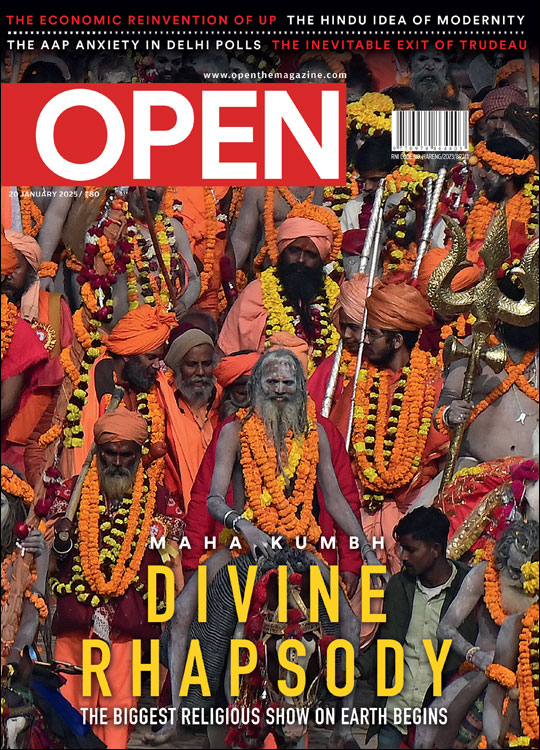/wp-content/uploads/2016/03/Chhattisgarh1.jpg)
Pioneering a state engrossing movement with the sole intention to bring the administrators and the citizens closer, the statewide Suraj Abhiyaan was conceptualized and launched in the year 2005. Later it was renamed as Gram Suraj which was a village centric campaign, post which it evolved into Nagar Suraj focusing on the Urban Pockets. Finally it developed and took the shape of Lok Suraj as it covered rural as well as urban areas. Delving into the factors that maneuvered the ‘Lok Suraj Abhiyaan’, foremost among them was to mobilize all levels of government and bring them closer to people, establishing a certain level of transparency. For 2 entire months, everyone, from the Chief Minister to the Sarpanch, and from the Chief Secretary to the Panchayat Secretary, interact directly with the people to enquire and redress their problems. Subsequently, they take feedback on schemes and policies to analyze their effective implementation. Essentially, this exercise lays the foundation for policy making, course correction and also helps in administrative oversight.
Through the social audits conducted during the course of Lok Suraj Abhiyaan, the government gets insights into the needs and aspirations of the people. Chhattisgarh being a young state, the State Administration wants to inculcate the principles of good governance in all the political and administrative institutions during the initial years. Taking note of which, the Suraj Abhiyaan is a crucial element that works towards strengthening people’s faith in democracy and in their elected representative.
The campaign gives an impetus for the entire year to the officials, who carry out their duties with complete diligence and efficiency. They keep themselves geared up for the surprise visits of the Chief Minister Dr Raman Singh, to review the progress of their regions and assess the implementation of welfare schemes. This campaign has contributed largely in spiraling undeterred faith of the citizens. They have become more confident and aware of their rights; they are upfront in availing various benefits under different welfare schemes. Further, they pay close attention to the workings of the government in their region since they know that the Suraj campaign will provide them an opportunity to convey the difficulties faced by them to the Chief Minister directly.
The Suraj Abhiyaan is always scheduled in the summers and the reason behind it is that roughly all sections of the society enjoy a relaxed phase. The farmers are home; children have summer vacations and so on. This allows for interaction with maximum number of people. Also, this gives a wider section of the beneficiaries or citizens otherwise to participate and give their feedbacks on the ongoing schemes. The children talk about schools, mid day meals, etc. The farmers share their feedback on topics of irrigation, land distribution matters, subsidies and sale of produce. Apart from this, people from different age groups also get an opportunity to communicate their expectations directly to the administrative and political heads of the state. From pension to anganwadi, vaccination to PDS (Public Distribution System), the Suraj abhiyaan is a festival of democratic dialogues which aims at driving good governance as per people’s aspirations.
Many crucial policies and schemes of the state have taken birth during the previous Suraj Abhiyaans. To name a few:
Paddy procurement
Bastar Development Authority: Under which various meetings with the regional representatives, officials, and state officials are conducted to review the development of the Bastar regions and plan the future works. Moreover, a separate fund is allocated for carrying out developmental works in the area.
“Collective efforts and contribution of public representatives and State Government’s officials and employees have begun a new chapter of development in tribal populated areas of Chhattisgarh,”- Dr. Raman Singh, Chief Minister of Chhattisgarh.
• PDS: Chhattisgarh has received all round praises for setting an example for the rest of the country with its Public Distribution System. The central government and the Honorable Supreme Court has appreciated the system and asked other states to follow Chhattisgarh’s model. PDS’ evolution and Chief Minister Dr. Raman Singh’s Suraj Abhiyaan have walked hand in hand to bring Chhattisgarh where it is today with respect to food and nutrition security. The result is clear in the fact that now, more than 90% of the people of the state have been provided with both food and nutritional security. The insights gained during Suraj Abhiyaan’s visits have guided the government in constantly improving the PDS according to the ground realities of the state. Chhattisgarh is now the first state to provide Right to Food to its people through legislation. The series of reforms since 2005 including de-privatization, providing cards on time, making the process online and transparent, establishing call centers, etc. has made the system an exemplary model.
Now, the government agency procures and shops buy from the agency and are directly answerable to the consumers.
• Saraswati Cycle Yojana: With an aim to curb down the dwindling statistics of girl drop-outs in school and achieve cent percent enrolment of girls who have passed class VIII and ensure their retention till class XII, the state government has launched this scheme. Under the scheme, girl students are provided with free bicycles that will encourage them to attend school and ease their commute.
Lok Suraj Abhiyaan 2017
The Lok Suraj Abhiyaan is a perfect example of a bond of trust, responsibility, and accountability growing between the people and their government. After serving 13 years in the state, even today each year in the summers, the government goes door to door. This year, the abhiyaan was upgraded in an unprecedented fashion, when application collection centers were organized to take as many applications of grievances as possible.
Grievance redressal has been brought to the center of Lok Suraj 2017 and for this a time-bound delivery of solutions is ensured by dividing the campaign into 3 phases:
Phase I: (February) Application collection: 11,184 nodal officers were appointed at block level. Applications for demands and complaints were collected through the nodal officers at application camps. The collection was also done online, and through collection boxes placed at Gram Panchayat and Urban ward offices, Janpad Panchayat, Tahsil office, Collectorate and other government offices.
After filing the application(s), the applicants were given receipts with the date and venue of redressal delivery.
Phase II: (March) This month was the month of redressal. All the departments were given a time-period of 30 days to resolve the issues mentioned in the applications. Collectors and higher ranked officials were monitoring the redressal process throughout. Applicants could also track the status of their application either online or via their phone numbers.
Total number of applications received: 28,47,705+
Phase III: (April-May) 2289 Redressal camps (Samadhan Shivirs) were organized at cluster level. Deputy- collector or higher ranked officers served the redressal to applicants in the presence of other applicants at the Shivirs.
On spot applications were also being received at the Shivirs and their redressal was done as much as possible.
On the other side, Chief Minister Dr Raman Singh along with the Chief Secretary, Mr. Vivek Dhand and other Department’s Secretaries travelled across the state for these 2 months. Other ministers and leaders followed their lead. The idea was to bring all levels of government together in villages and cities to interact with people, get feedbacks so that policy formulation in the future is as full-proof as possible in satiating the needs of the people.
Parallel to the ongoing samadhan shivirs, the Chief Minister, on a given day, undertook:
i. Surprise visit to a village/city in one district to interact with people in chaupals, oversee major development works, and check the implementation of welfare schemes at grass root level. These visits are the primary source of information relating to people’s sentiments and requirements based on which new policies/schemes are created and course correction is done for the ongoing schemes.
ii. Surprise visit to a Samadhan Shivir in another district.
iii. Conducting district review meeting in yet another district in the evening to take a review of the progress made by the district in question, interact with the administration of the district to take a stock of the ongoing works and implementation of schemes.
Another result of these visits is identification and correction of administrative irregularities. The new system that aims to focus on grievance redressal has done remarkably well owing to a parallel series of Redressal camps.
The application collected has been categorized area wise and department wise. All the applications have been made available to the public on the website. https://cg.nic.in/loksuraj/ As the database contains the subject matter of the applications (for example: Pradhan Mantri Awas Yojana, construction of roads, distribution of Solar Pumps, etc.) it helps in analyzing which of the schemes need more work. Rate of redressal: Over 79% of applications have been resolved so far. The remaining is being processed.
The excitement and ecstasy among the citizens during Lok Suraj visits of Chief Minister is extraordinary.
As soon as the news spreads that Dr. Raman Singh has come to their village/town, people gather in large numbers to interact with him and share opinions on a wide range of matters. The confidence that stems from sharing their grievances and feedback directly with their Chief Minister is one of a kind. It reinstates the importance of their contribution in policy making and good governance.
Policy Insight so Far in Lok Suraj 2017
In terms of findings the following are the major observations made so far and more will be added as we proceed:
PMUY (Pradhan Mantri Ujjawala Yojana): Women beneficiaries are tremendously excited about Ujjawala Yojana owing to the big change that gas stoves have brought to their lives. Direct verification of such benefits by the leader of the state emphasizes on the importance of clean energy amongst the citizens. It has made life easier and healthier for many as it was evident from the field visits. It is noteworthy that Chhattisgarh is the first partner state in Ujjawala Yojana. With over 10 lakh connections already distributed, the government aims to provide over 25 lakh connections in the future as well. However, it was noted that the distribution network needs expansion especially for refilling purposes
PMAY’s (Pradhan Mantri Awas Yojana) implementation needs further strengthening in the state. Out of roughly 28 lakh applications that were received, more than 12 lakh were related to PMAY
SKY (Sanchar Kranti Yojana) needs a “Mission Mode” implementation. With the increase in number of mobile phone users, the network’s extension has become a high priority task. With more and more services available online, it was felt that the mobile and internet connectivity in the state needs to be highly efficient. This will help bring in transparency in the system and allow the citizens to conveniently use from government’s services.
“Journey of Lok Suraj in Chhattisgarh”
• After 11 years of hard work and 13 tenders issues repeatedly, the Shabri River Bridge was finally opened for the public in Sukma District. From Dornapal in Chhattisgarh to Podia in Odisha, the bridge will connect Chhattisgarh and Odisha like never before. This will contribute in bringing people closer and promote culture and trade between the two states. The bridge is significant as it strikingly reduces the distance between Chhattisgarh and Podia in Odisha from 120km to 3km.
• With students of DAV Prime Minister Adarsh Vidyalaya, Bijapur District. Such visits to schools followed by interactions with students, teachers and the Principal regarding curriculum, facilities, etc. keeps the morale of the state youth up, and helps in identification of those areas in education that can be worked upon and improved further.
• During a surprise visit to Gaurkheda village of Bilaspur District, the interaction with MNREGA workers engaged in building a pond was not just insightful, but also a moment to cherish. Urmila Ji, one of the many workers engaged there, shared her Tiffin with the Chief Minister which had delicious Amru Chatni and Basi Bhat. She received a solar pump and as well as a gesture of thanks.
Also, it was announced after this visit that all the MNREGA workers in the state will be provided with free stainless steel Tiffin boxes.
• Thengadand, Bilaspur – On the recurrent complaints received by the villagers, a PDS shop was suspended due to lack of efficiency of the managerial staff. The shop will now be run by the local co-operative society.
• The aims of the visits under Lok Suraj are numerous. One of the key objectives among them is to promote the people and associations who are the source of inspiration to many and who are taking the community forward. One such example is the Pink Auto in the Ambikapur District that is driven by women only. The women drivers work till 11 in the night ensuring people reach their destinations safely. It is not only a source of income for them, but also a symbol of their self-sufficiency and self-respect. Way to go Women Empowerment!
• Ensuring that the welfare schemes reach the last person in the state is the goal of Lok Suraj. (Along the lines of Lakhsya Antyoday, Pran Antyoday, Path Antyoday). Solar pumps provided under Saur Sujala Yojana are empowering the farmers, making agriculture easy and introducing green energy in the villages and cities.
• Jamhari Village, Mahasamund District. Mid Day Meals have encouraged children to attend schools regularly and ensured their health and consistent nutrition intake. The menus are different every day, and the quality of the food is strictly monitored.
• Gabdi Village, Balod District. Continuing the mission of improving PDS, now the PDS is based on Aadhaar. Once the Aadhaar number is linked to the PDS card, the process gets more convenient through bio-metric identification and brings transparency to the system.
• Gabdi Village, Balod District. Meeting the members of the local Gulabi Gang, Bharatmata Vahini, and Women Commando who are working against alcoholism and other addictions was a moment of pride. They are the strongest pillars of the new policy of the state and they keep the bootleggers away from their villages.
• The work of the Anganwadis is the backbone for the wellness of mothers and their children. Through ready-to- eat meals, timely vaccinations and proper care, the anganwadi plays an indispensable role in keeping the people of the state healthy. Nutrition is one of the most important areas towards which the government is working rigorously from as many aspects as possible. It was also very reassuring to see that all the houses in the village were using LED bulbs that they received under Ujala Yojana.
• The state takes pride in its children. Pooja here is as good at singing as she is at her academics. The future of the nation depends on these talented kids and governments all over should ensure that their welfare is excellent at the least.
• During a surprise visit to Salhe-Kanker District, Chief Minister Dr Raman Singh was informed that one of his NSG commandos is a resident of that very village. His demand of land patta under Forest Rights Act was resolved under Lok Suraj immediately.
• Dantewada district of Chhattisgarh is an example of how farmers can benefit from Organic Farming. Although organic farming in Dantewada is a practice since time immemorial, other regions must draw their inspiration from the district and learn how organic farming is beneficial for the farmers and the community together.
(A marketing initiative by Open Avenues)

/wp-content/uploads/2025/01/Cover_Kumbh.jpg)












More Columns
The lament of a blue-suited social media platform Chindu Sreedharan
Pixxel launches India’s first private commercial satellite constellation V Shoba
What does the launch of a new political party with radical background mean for Punjab? Rahul Pandita